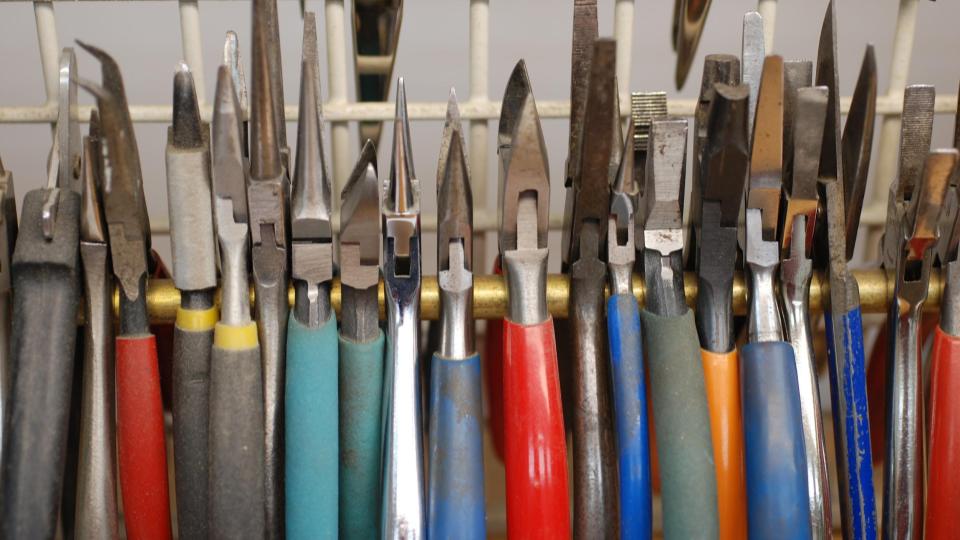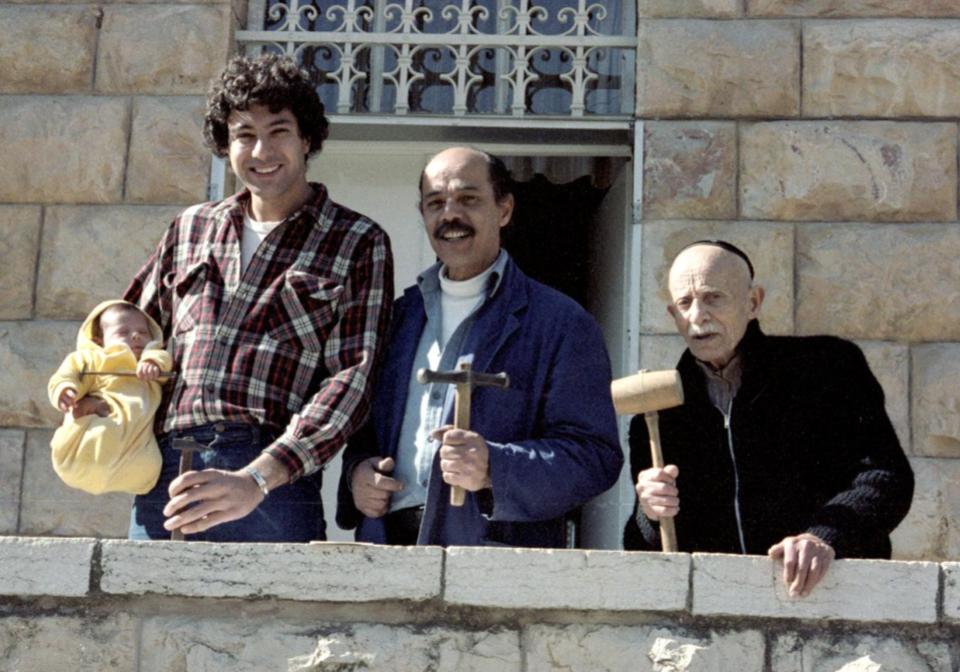
The Yemini Silversmiths are a four generation family institution creating Judaica and jewelry and working out of their one hundred and seventeen year old studio in a the heart of Jerusalem. Following in Yehia and Yaacov’s footsteps, Boaz, Margie, and Nadav practice the intricate art of designing and creating rare works of art from precious metals – gold and silver – by hand, fusing the renowned Yemenite tradition with the modern technology and artistic design that they studied at the Bezalel Academy of Art and Design.
With an emphasis on quality and distinction, the Yemini reputation for excellence has made their unique work a preferred gift for dignitaries and heads of state. Various museums around the globe, including the Israel Museum in Jerusalem, the Jewish Museum in New York, and the Skirball Museum in Los Angeles, display Yemini pieces. Judaica aficionados world-wide collect and exhibit Yemini work in their private collections. In addition to our collections of Judaica and jewelry, we are happy to offer specially tailored pieces which can include:
- Synagogue pieces, such as Torah crowns and Torah finials, breastplates, Ner Tamid, Hanukkah menorahs, and large ceremonial objects.
- Corporate projects, such as custom awards and gifts of donor recognition, designed to convey client’s values.
- Personalized objects. Hebrew or English names or initials, various scenes and biblical figures, or your favorite filigree pattern are a few ideas we can implement to create a truly unique object that will serve as a keepsake for generations to come.
- Bespoke artwork, created in full collaboration with the client, and based on the client’s design or whim.
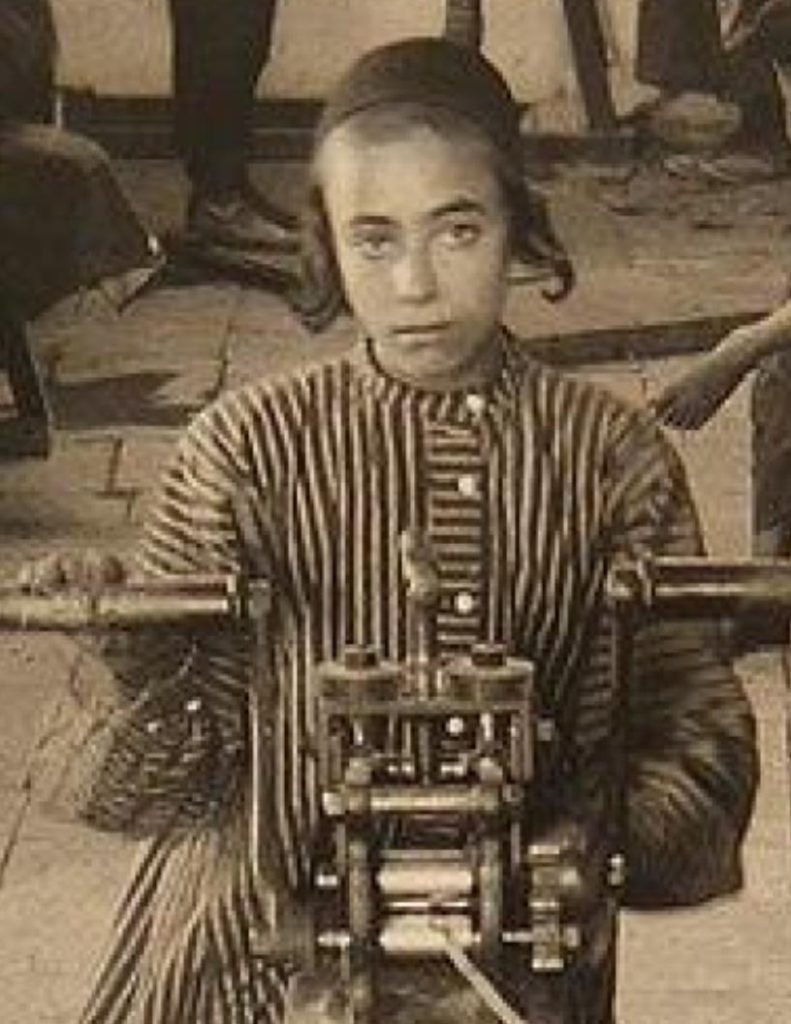


YEHIA YEMINI
Born in 1894 into a family of Sana’a silversmiths, Yehia Yemini reached Jerusalem with his family at the young age of three. When Bezalel founded its Silver Department In 1908, Yemini became one of its employees, and helped other Yemenites to forge Bezalel’s unique synthesis of East and West. After the dismissals of 1914, Yemini joined three groups of Jerusalem craftsmen who specialized in silver crafting in the manner of Bezalel: “Keter,” “Kav Lavan,” and “Sharar” (directed respectively by Shneior, Ossanovitch and Rabinovitz). Yemini was exceptionally talented and skilled in blending the traditions of Yemenite silver work with the design directions supplied by Ze’ev Raban. He established his workshop in the ground floor of his home in a Jerusalem neighborhood, known as Neveh Bezalel. To supplement his livelihood, he also worked as a torah scribe. In time, his craftsmanship gained prestige, both local and international. In 1931, he won a silver medal at the Paris world exhibition and in 1932, he won a gold medal at the Yarid Hamizrach exhibition in Tel Aviv. In 1937, he fashioned the Torah scroll cover and receptacle for the letter of goodwill, which were presented to King George VI on the occasion of his coronation. Yemini continued to actively work and produce Jewish ritual articles of filigree silver until the age of 85. He passed away in Jerusalem in 1983.

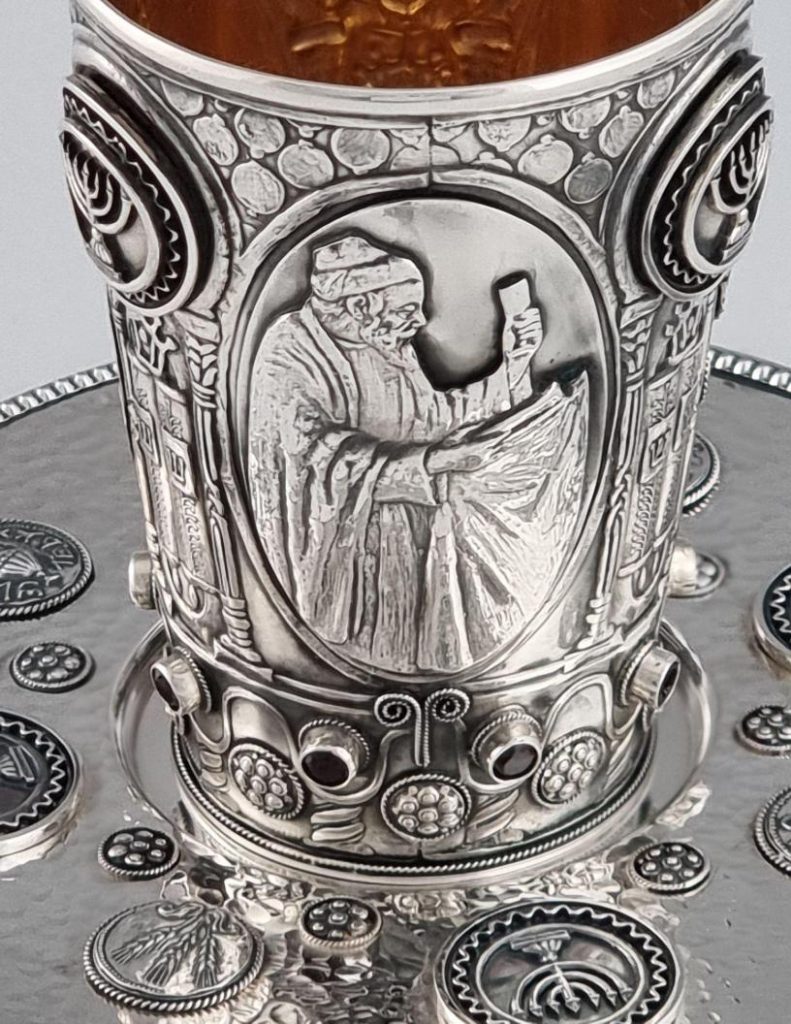
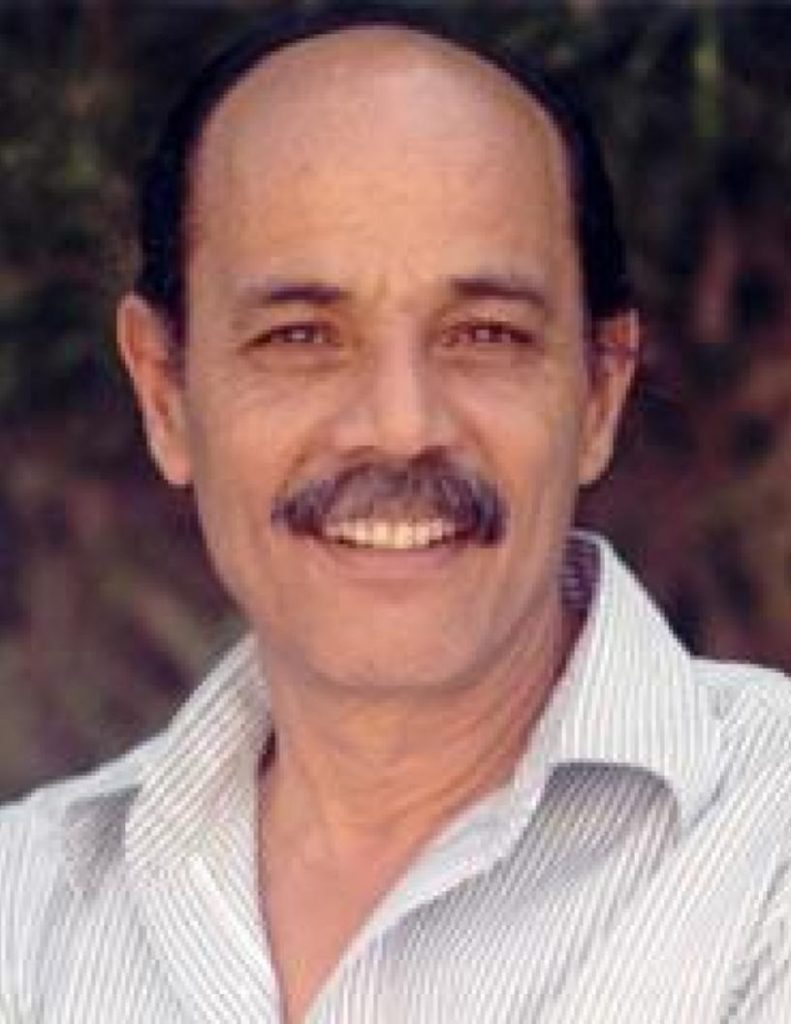
YAACOV YEMINI
Born in Jerusalem in 1929, Yaacov has spent his entire life in close proximity to the family workshop. In 1947, he began his studies in the metalwork department of the “New Bezalel” (which was reopened in 1935 under the direction of new immigrants from Germany). During this time period, the institution was directed by Mordechai Ardon, a graduate of the Bauhaus; the metal department was headed by Yehuda Wolpert and David Gumbel. In the course of his studies, which he completed in 1950, Yaacov absorbed novel German design principles: functionalism, clean lines, geometricality, an absence of romantic ornamentation and mechanistic aesthetics. However, in keeping with family tradition, Yaacov expanded the Yemenite influence in the “New Bezalel” by complicating the universal language of modernistic formalism with the Yemenite-style flowery filigree ornamentation that is often set with stones. He worked with his father in their home studio for many years, supplementing Yehia’s traditional line with a newer, more stylized and abstract one, one which also uses squarer lettering. In this manner, he has distinguished his own work from earlier pieces by being less burdened with ornamentation.
Yaacov Yemini – 1929 – 2010 – In Memoriam
It is difficult to part from a loved one. Though they cannot cancel out the great sadness and sense of loss, there are various sources of comfort which make themselves evident. We are blessed with many sources. Yaacov was such a magnetic personality; his smile, his charm, his warmth, his humor, his optimism and the sparkle in his eyes were all radiant and penetrating. His artistic talent and skills gave birth to works of art and Judaica which enrich the lives and embellish the traditions of countless people around the world. The fact that so many people shared a special sense of connection with Yaacov makes his persona all the more real and all the more eternal. No doubt one always wishes for more shared time on earth with loved ones. No time is a really good time to say good bye. Yet we are grateful for the many wonderful years that Yaacov was a vibrant and shining part of our lives. Malca was blessed with a unique partnership spanning over 58 years, his children were blessed with a loving and generous father and father-in-law as well as teacher and intuitive and resourceful partner and co-creator, and his grandchildren were blessed with a caring, big-hearted, fun-loving and doting grandfather. There is comfort in the fact that he “did it his way” both in his life and in his death. We miss him intensely. May Yaacov’s memory be blessed.
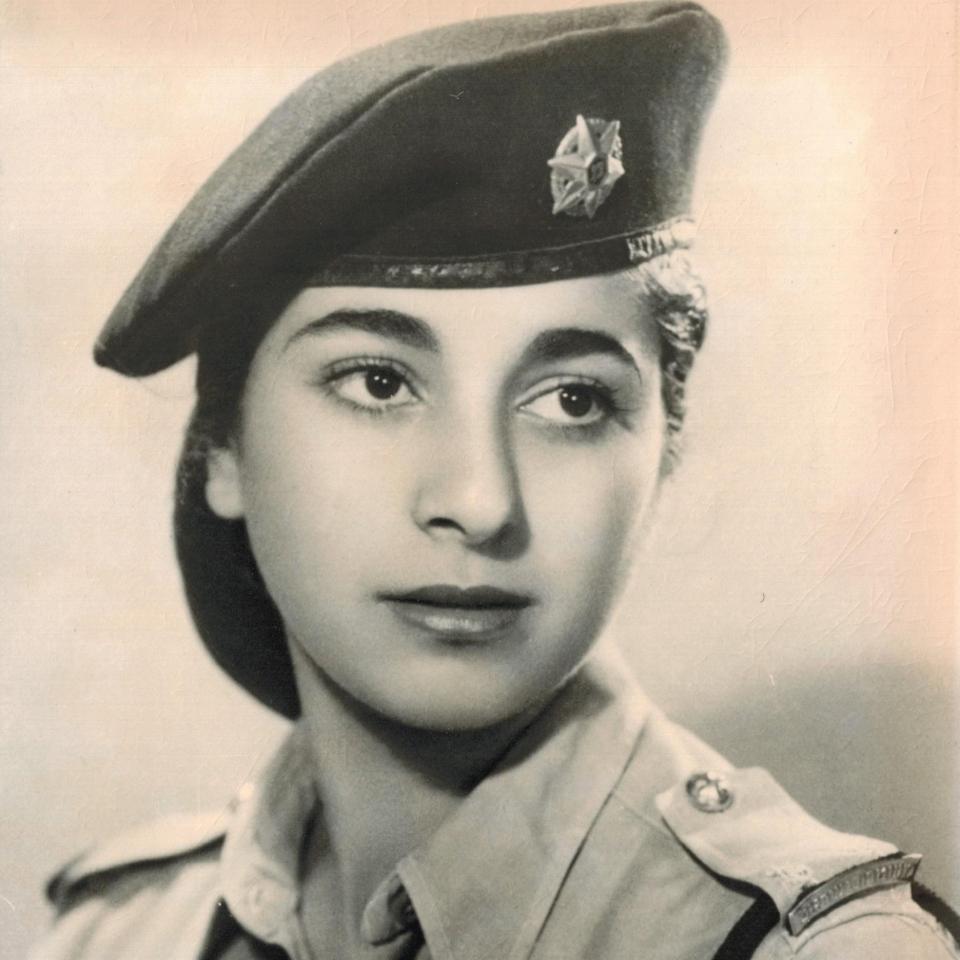
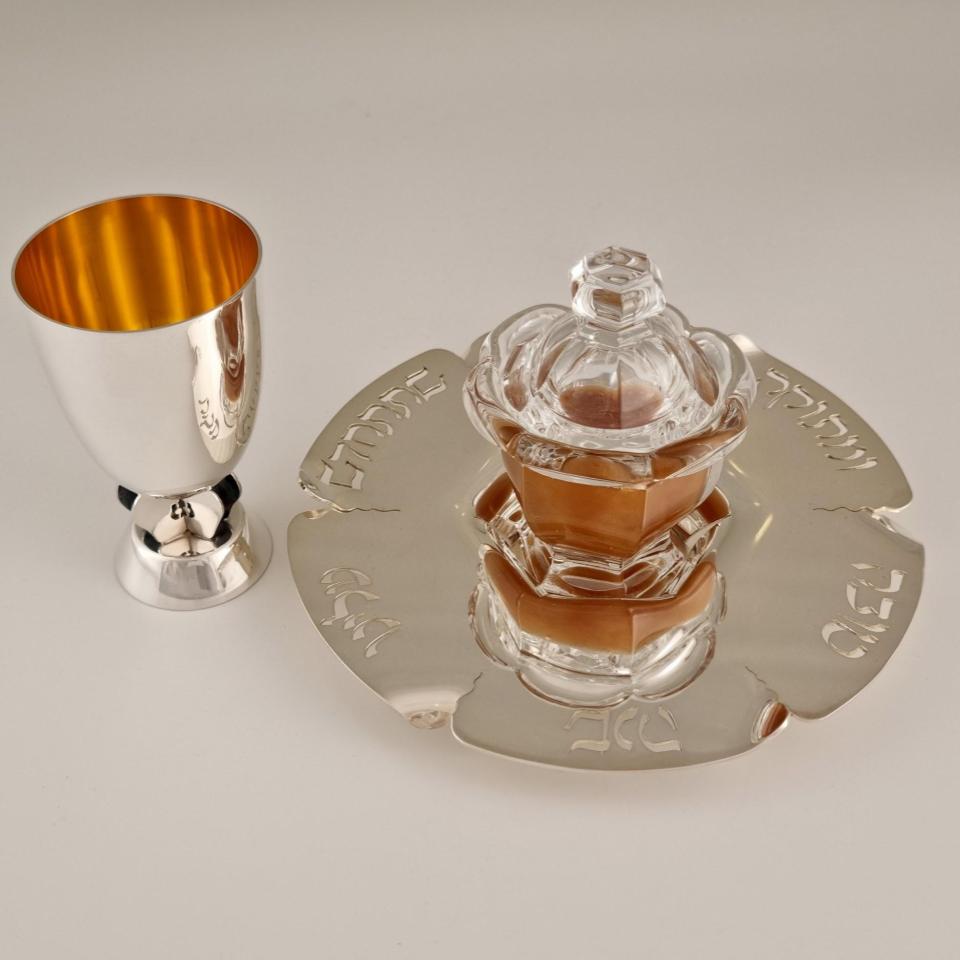
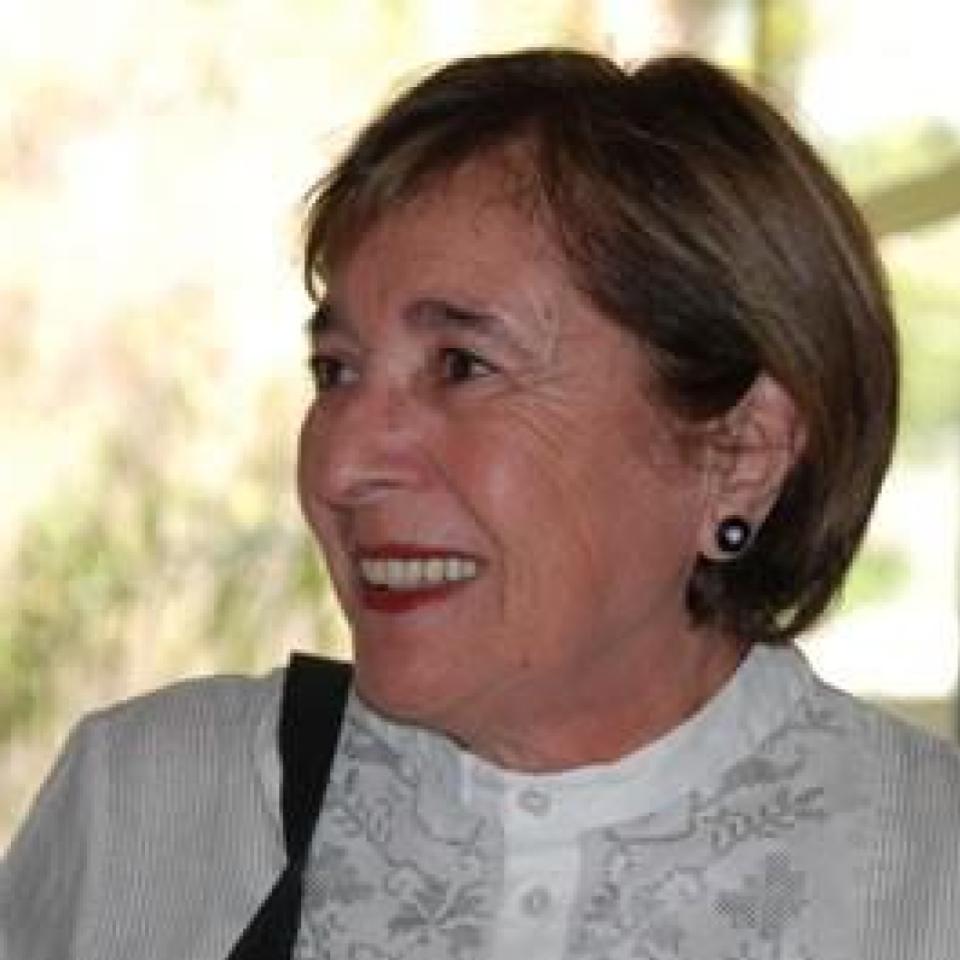
MALCA YEMINI
Born in Jerusalem in 1934, Malca is the undeniable backbone of the dynasty – the quiet force behind the scenes – and cannot be left unacknowledged in any recording of family history. Besides being an amazing fountain of historical knowledge in her own right, Malca provides the loving physical, emotional and cultural nourishment which make the wheels go round, keeping all of the “motors” functioning smoothly and happily! Additionally, she has been called upon countless times throughout the years to lend a critical eye and a skilled hand to the production line in the Yemini studio.
Malca Yemini – 1934 – 2011 – In Memoriam
With great sadness we share the news of the passing of our beloved mother, mother-in-law, grandmother and great-grandmother Malca Yemini. She parted ways with us on November 12, 2011 after a valiant journey with illness and widowhood. She was a most amazing woman – loving, generous, intelligent, curious, creative, talented, humble, noble, strong, determined, beautiful inside and out, and this is but an abbreviated list of her qualities. Malca left us with innumerable sweet memories of shared experiences and with invaluable life lessons. We hope that as we carry on without her physical presence, our lives will reflect the goodness she embodied and the goodness she bestowed upon us. May her memory be blessed, dear Ima, dear Malkush, dear Savta. We love and miss her.
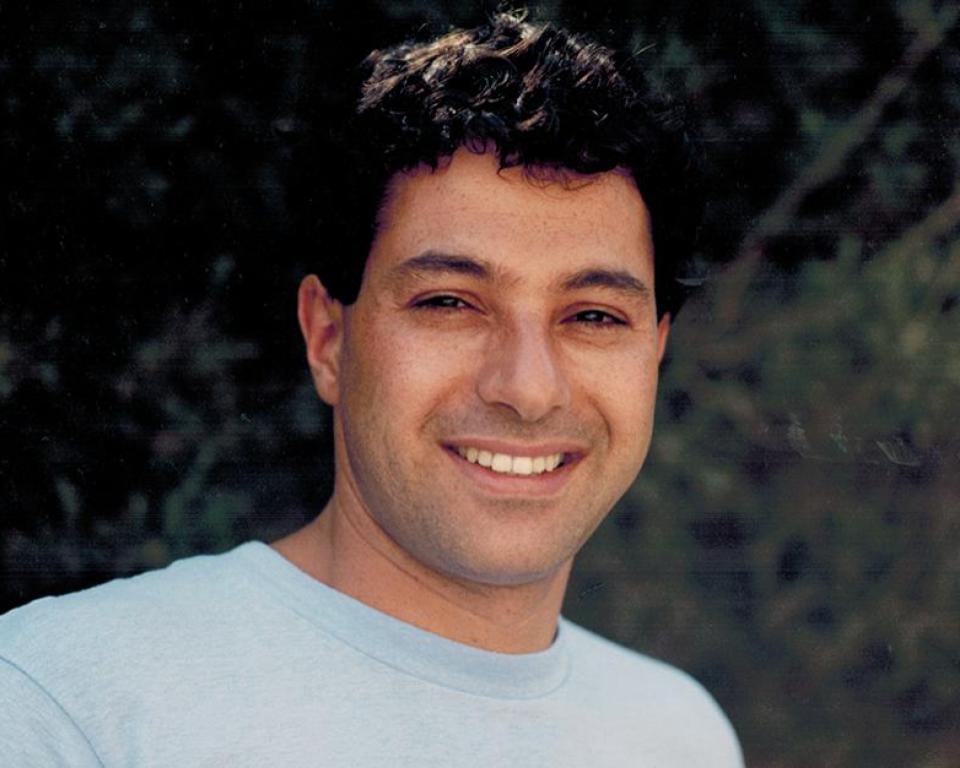
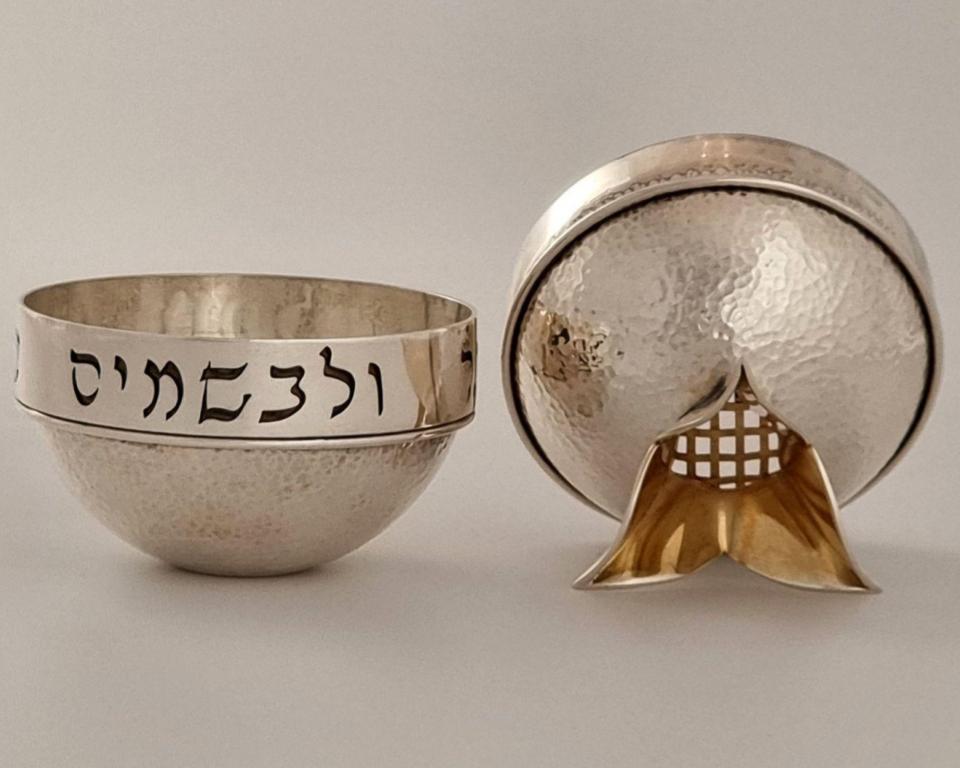
BOAZ YEMINI
Born in Jerusalem in 1956, he joined Bezalel’s silversmith and goldsmith department upon completion of his military service. The department under Arie Ofir, like other sections of Bezalel, was at the time experiencing a shift towards innovative Western design. Boaz Yemini pursued his studies till 1981, absorbing the abstract geometrical minimalism that the department’s teachers had adopted under the influence of advanced Anglo-Saxon sculpture. Totally lean forms; the blending of silver with novel materials (brass, perspex, wood and iron, for example); an inclination towards modularity, serialization, aesthetic simplicity and a striving for the utmost uniformity – these are untraditional values Boaz Yemini has brought to the design of traditional silver utensils. His early work as silversmith in the family studio has shown a continued inclination towards forms and figures, which were in part surrealistic, organic, and fluid; nevertheless, his other creations are characterized by starker forms, injecting the traditional articles with an innovative and sophisticated structuralism (with an occasional leaning towards kineticism). Throughout his career, Boaz has added a variety of modes and tangents to ornamentation, his Yemenite affiliation.

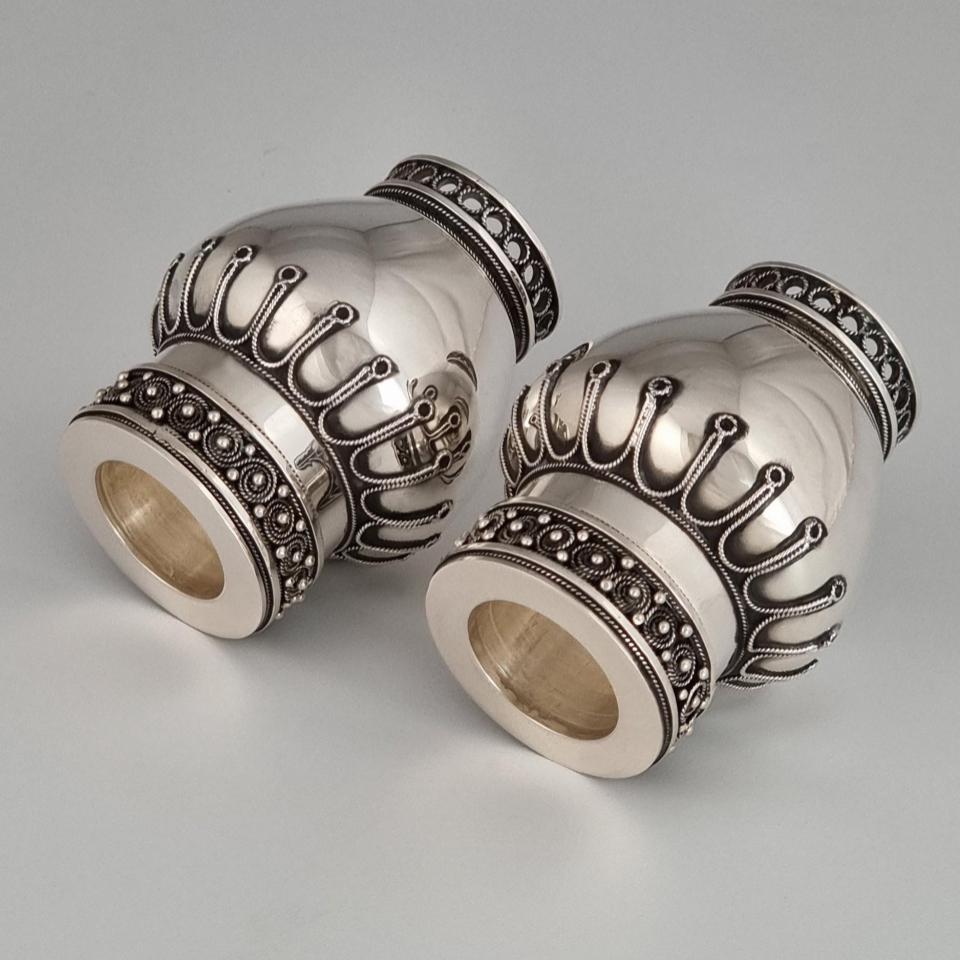
MARGIE YEMINI
Born in the US in 1955, Margie lived In Israel for a year in 1970 and made aliya in 1972. In the following year she began studying at the department of Graphic Design at Bezalel. After two years of study she left to fulfill her two years of army service, and subsequently returned to Bezalel to begin a four year stint in the department of Industrial Design. She graduated in 1981. That same year Margie and Boaz got married and began their most creative endeavor of all times – the breeding and nurturing of a new generation of Yemini offspring. No announcements have been made regarding the emergence of a fourth generation of artists who choose to carry on the family involvement in the studio, though nothing to the contrary has been officially announced yet either! Under the attentive instruction of two master artists (in the form of her husband and father-in-law) Margie has mastered many of the silver production techniques. She also fills the role of associate designer, silver artist, graphic artist, photographer, secretary and designated family liaison to the world of computer technology.
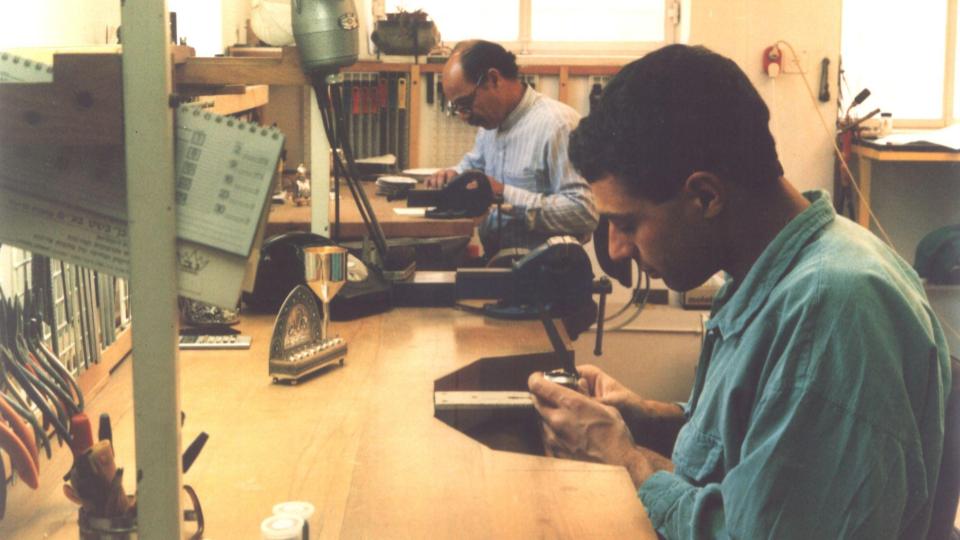
The Silver Department at the Bezalel Academy of Art and Design was established in Jerusalem in 1908. Yehia Yemini (1894-1983) studied in the department’s first class. Yaacov began his studies at Bezalel in 1947, graduated in 1950, and joined Yehia in his studio, supplementing his father’s traditional lines with more stylized and abstract ones. Boaz started “playing” with his father and grandfather in the family studio as a child. He followed in their footsteps and studied in the gold and silver department at Bezalel, where he graduated with honors in 1981. At Bezalel, he met his future wife Margie, who graduated from the Industrial Design Department the same year. The three worked together to create traditional pieces of jewelry and religious artifacts, while concurrently introducing more modern designs into their lines of Hanukkah menorahs, mezuzahs, Kiddush cups, candlesticks, Havdalah sets, Seder plates, and Torah cases, pointers, and crowns.
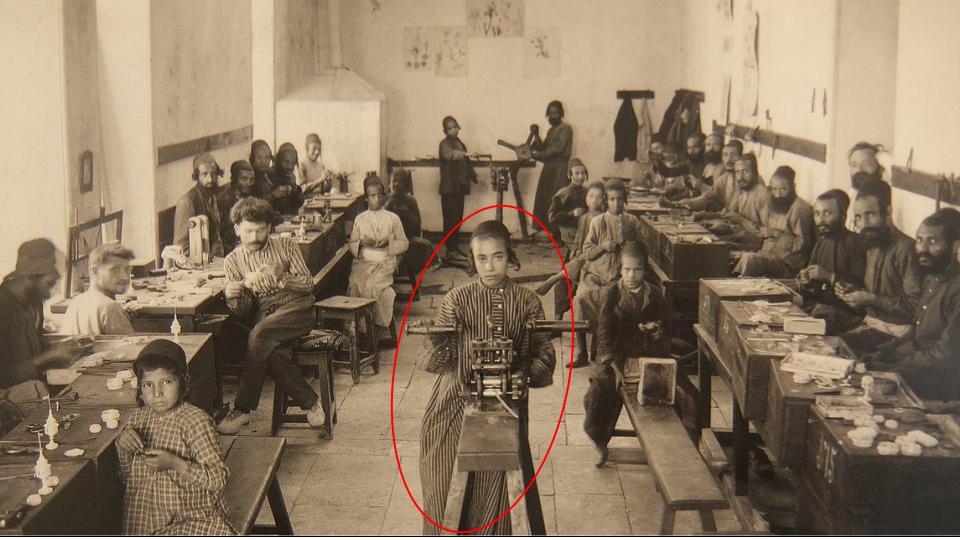
THE SILVER DEPARTMENT AT “BEZALEL”
Boris Schatz founded an art-and-crafts school in Jerusalem in 1906, naming it “Bezalel” for Bezalel Ben Uri, builder of the First Temple of biblical times. Marking the onset of applied cultural Zionism in the Land of Israel, the Bezalel School heralded efforts to forge links with a broad range of Jewish artistic traditions from East and West. The school’s daring innovation offered a leading role to the local Yemenite community, particularly in the Filigree Silver Department, which was inaugurated in 1908. Boris Shatz originally hoped to coax dozens of Jewish silversmiths’ families from Sana’a in Yemen to come to Jerusalem. He even went so far as to consider a journey to Yemen disguised in local costume, but ultimately settled for the manpower available in Jerusalem’s Yemenite quarter of Mishkanot. In 1910, he relocated a dozen families of Yemenite silversmiths from Jerusalem to a small crafts village in the Ben Shemen Forest near the town of Lod. The Bezalel Colony, as the village was called, sent quantities of filigree silver products to Jerusalem, in order to supplement similar articles created by the Bezalel Silver Department. By 1913, the Bezalel Silver Department already numbered some eighty employees, among them Yehia Yemini, who had been working there from the outset. The department was headed by Shmuel Persov, an artist of Russian origin, who had spent a year studying filigree craft in Damascus in 1908. Persov taught new concepts of filigree work that were not always familiar to his Yemenite employees; thus the craftsmen, who ranged from children to the elderly, produced filigree work influenced both by the Yemenite and the East European style. The products were of every type and variety, including both ritual articles and practical utensils: Torah finials, perfume containers, Hanukkah menorahs, scroll covers, pipes, paper knives, coffee cups and saucers, sugar tongs and spoons, tea caddies, buttons, purses, jewelry boxes, cigarette cases, book bindings, bracelets, and brooches. Yehia Yemini distinguished himself with the quality of his work which included handcrafting, Oriental decorativity, and figurative or abstract ornamentation. The designs were interspersed with classical hammerings of Biblical heroes, holy places and tribal emblems and embellished with traditional verses. Filigree work was used with etching and hammering, with settings of stones, and with mother-of-pearl and enamel. Additionally, he combined granulation (soldered silver balls) with fine flowery adornment in the style of Russia and Poland. With his multi-dimensional perspective and outstanding Yemenite handcrafting skills, he created a pluralistic and eclectic style that came to embody the Bezalel Silver Department. Many of Bezalel’s leading designers, such as Ze’ev Raban and Erich Goldberg, provided the Silver Department with many prototypes. Goldberg, together with his father, directed Bezalel’s workshop in its early years. Extensive dismissals of workshop employees in the First World War era led to the emergence of independent groups of “Bezalelite” craftsmen. The “Keter” group, for example, was headed by Yehuda Shneior. They specialized in works of silver, gold, ivory, stone, mother-of-pearl and metal-hammering. A majority of this group’s craftsmen were Yemenites, who persevered in the execution of “Bezalelite” designs. When Bezalel closed in 1929, the Yemenite craftsmen continued to occupy the deserted buildings, applying the Bezalel stamp to the metalwork that they produced in their now recognizable forms. Yehia Yemini, the most renowned of the craftsmen, continued his craft almost until his death. He created a large quantity and variety of characteristic Bezalelite products, with the authentic Yemenite flavor, a large majority of which were based upon detailed sketches he received personally from Ze’ev Raban in the 1940’s.
